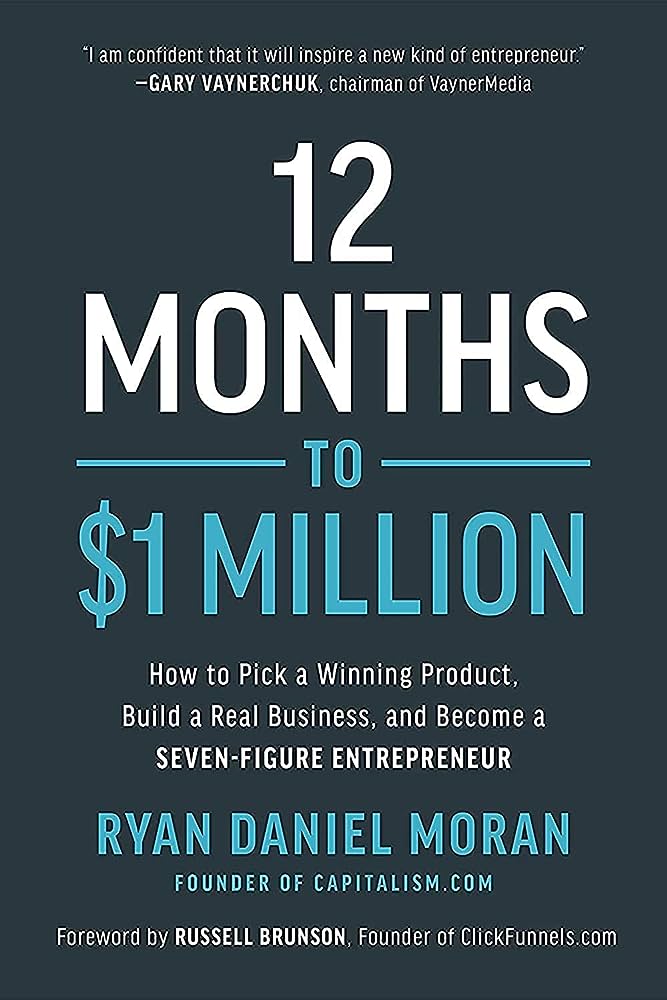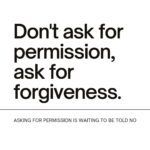In 12 Months to $1 Million: How to Pick a Winning Product, Build a Real Business, and Become a Seven-Figure Entrepreneur, Serial Entrepreneur and host of Capitalism.com Ryan Daniel Moran describes a one-year plan through the three stages of entrepreneurship to making the first $1 million. Ryan is the founder of Capitalism.com, which empowers entrepreneurs to create change through business. He also organizes an annual event, the Capitalism Conference, which brings together all the top entrepreneurs to tell their stories.
Being an entrepreneur means thinking in years rather than months. The worst thing you could do in any cycle is trade a long-term risk for a short-term win.
The twelve-month process is divided into three stages: The Grind (months one to four), The Growth (months five to nine), and The Gold (months ten to twelve).
The Grind Phase
Most people fail because they never make it out of The Grind. Those are the initial months in which you make decisions around what product to sell, what your price point will be, and what launch strategy you will use. You’re in The Grind until you can sustain at least twenty-five sales per day on your first product.
The Growth Phase
The second stage is The Growth, which is where the snowball really starts to build. Your job in this stage is to roll out as many products as you can comfortably handle, without distracting yourself. Remember, just three to five products at twenty-five sales per day is a million-dollar business.
In this stage, you’ll be releasing new products to the same group of customers as your first product. You will release them, one by one, and get each product to at least twenty-five sales per day. Momentum will build faster here as you won’t have to go through the same “decision hurdles” the second time around. About six months in, you’ll be able to smell seven figures, and you’ll be tempted to complicate the process. Fight your urge to get distracted, at least until you’ve released a minimum of three products.
The Gold Phase
The third stage is The Gold. Here you’ll start to experiment with different advertising formats: You might run some Instagram ads, sponsor a podcast, or pay an influencer. This is also the stage in which you finally, finally, might consider paying yourself, and you can call yourself a full-time entrepreneur. However, until you are at this point, your job is to stay as laser focused on following the plan as you can. There will be days when the sacrifice is excruciating. There will be days when you know you’ll have a six-figure windfall if you just sell and walk away. Hold on. You can survive another few months, another few quarters, until you’ve reached your goal.
The Online Brand Cycle
Moving forward, the key to fast growth is going very, very “micro.” The more specific an audience you can target, the faster you will grow. The more “niche” your products, the faster you will be able to release products and get to the first million. If you do that, you will be prepared for the next round of opportunities as they open up. As other major brands start to adjust to e-commerce, more distribution will exist for small brands like yours.
Start with the Person
You don’t have to get a million followers to have a million-dollar business. You need a fraction of advertising and a fraction of brand building along with three to five products that get about thirty customers a day. At the beginning, that means going “all in” on the few people who notice you, follow you, and buy from you. It will seem trivial at first, but the snowball will build over the next year due to “diffusion.”
Most entrepreneurs fail because they try to make a product for everyone. They waste their money on mass advertising, using messaging that never connects with anyone. If you want people to pay attention, you need to market to a specific person, not just sell your thing.
The Mindset of a Seven-Figure Entrepreneur
Most people stay poor for two reasons: They haven’t followed a strategy that makes them rich. and They don’t have the mindset of a wealthy person. Becoming an entrepreneur often really means twelve-hour days, a lot of red in your bank account, and long nights working alone. It means weathering storm after storm without an end in sight and no one on Earth backing you up.
An entrepreneur is someone who takes responsibility for a problem and does something about it. Sometimes, that “problem” is that you are broke and don’t want to be broke anymore. Sometimes, that problem is that your life sucks and you’re finally ready to do something about it. Or your kids have no future, and it’s time that you stepped up to the plate, stopped blaming other people or forces, and changed things for the better. An entrepreneur solves problems that someone else created. An entrepreneur takes responsibility in order to create change.
A brand isn’t a logo. It’s not a fancy website or a pack of sponsorships. A brand is trust. A brand is an expectation that the customer will be happy with his or her purchase. A brand is something built by creating a group of products that all serve the same person.
People are what make you money, not products
People are what make you money, not products. Think of it this way. A product is a onetime transaction. But a brand says something about a person. It tells a story that goes beyond the product. That kind of power leads people to buy multiple products and tell their friends about them. If you’re just selling random products, you’re robbing people of that story—a story about themselves. You’re getting sales rather than getting customers. And sooner or later, your business will come under threat by the next person who can sell your product cheaper, faster, or slightly better.
It’s important to define your customer around someone you know well. Don’t pick a group of people you know nothing about unless you’re prepared to do a lot of research on them—make sure you can identify at least one pain point shared by the group, and how you can serve that pain point with a collection of products.
Identify Your Gateway Product
“gateway product” because it’s the first in a series of products you’ll eventually sell. Whether it’s yoga mats or sports nutrition supplements, your gateway product represents the first obvious transaction for customers in that space. It addresses an obvious pain point and solves a simple problem. Once the ideal customer has the first product, they are likely to buy other products from the same brand.
Remember, you’re not just selling a product. You’re creating a message. You’re taking something that’s already there and crafting a story that’s tailored to your customer.
Focus on People, not the product
1. To whom are you going to sell?
2. What do they already buy?
3. Which product out of that suite of products do you want to focus on, to either make a great version of it or a version that solves one of their problems?
4. What does your group think about similar products on the market?
5. Where does your person hang out with others?
More Sales Does Not Equal More Profit
For a lot of people, the biggest hurdle is not placing that preliminary order, but rather finding the money to avoid running out of stock faster than it can be replaced. That’s why, at the beginning, you might have to use price as a way to control the speed of sales. If your product is selling too fast, you might have to scramble to fund your next order. If cash flow becomes a problem, then it’s an indicator your price point may be too low. You may need to increase your price until sales move at a manageable level, allowing you to easily restock your product before it sells out.
Don’t Ask for Money, Ask for Advice
When pitching to an investor, do not ask them for money. Ask for advice. Tell the investor you’ve been pursuing an opportunity, and explain the momentum that you have. Tell them that you’ve run into funding challenges. Tell them that you want to place larger inventory orders to serve your growing audience. Then tell them how much money you think you need. Finally, ask them, “How would you fund the growth of this business if you were me?” Asking for money puts people on the defensive. Asking for advice opens them up. Watch how fast money shows up.
Money is an amplifier, not a magic wand. If you have a bad idea, money just amplifies that bad idea. If it’s a good idea, it can spread that idea to new customers.
How to Stack the Deck
1. Identify where your target market already hangs out.
2. Create a series of content directly targeted to that person.
3. Document the process of your product.
4. Start announcing when the product is going to be available.
5. Reach out to your own personal contacts and start lining up that one influencer.
6. Finally, build your hot list.
Give yourself a time buffer
If you think your product is going to be available on Friday, schedule your launch for the following Wednesday. Hyping up a launch date only to be unable to take sales on that day is a huge waste of customer attention and engagement. You may want to consider creating some sort of incentive for people to buy within the first few days. This could be a bonus or some sort of discount, like a BOGO deal.
In the customer’s mind, scarcity equals value.
Focus on your Customers not the Competition
In business, you win by going all in on your customers. If you focus on trying to “beat the winner,” the best you can hope for is getting caught up in a price war, which is a race to the bottom. Play your game, let competitors play theirs, and trust the system will take care of itself. In fact, if you’re correctly executing this process, you won’t even be thinking about the competition. You’ll be too busy talking directly to your customers, making sure you have a damn good product, and making sure they have a damn good experience.
Don’t fall into the trap of making decisions based on volume, or trying to get a piece of someone else’s action; instead, do what is best for your own business and your customers.
You don’t need to dominate a market; you just need to get each product to at least twenty-five sales a day. And remember: Always default to serving the customer, and let the numbers fall where they fall.
All the best in your quest to get better. Don’t Settle: Live with Passion.



Comments are closed.